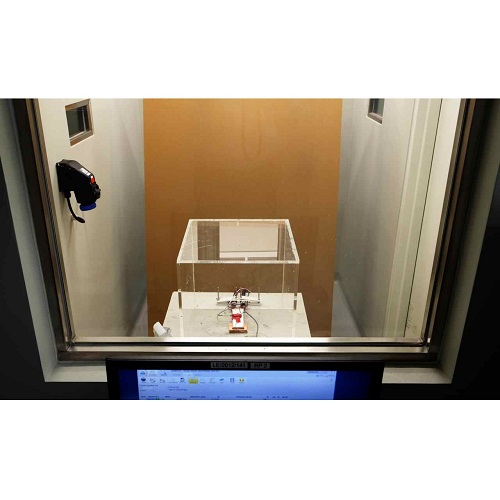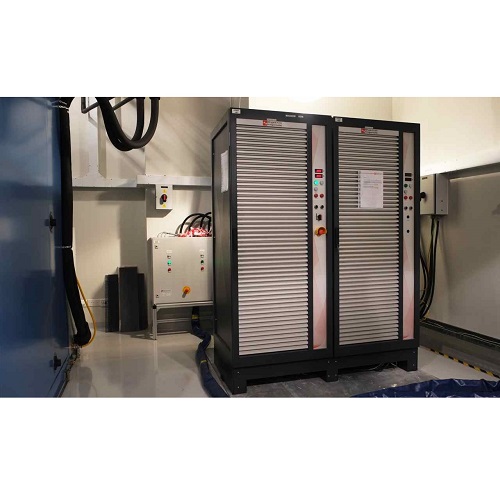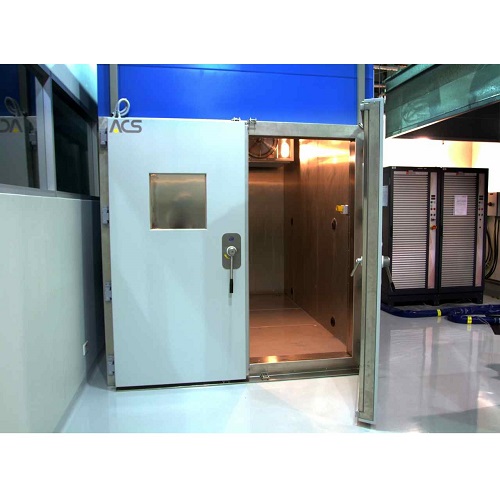- AquaCycle
- Proteins4Singapore
- Singapore's Pathway to Carbon Neutrality
- CellFACE
- LightSPAN
- Computational Modelling Group
- Energy and Power Systems Group
- SITEM - Singapore Integrated Transport and Energy Model
- MoVES (Mobility in Vehicular Environments at Scale) lab
- Projects
News

TUMCREATE Opens New Battery Lab Boasting Regional Firsts
17.05.2013• Cutting-edge equipment including some that are seen for the first time in Southeast Asia
• Research focus on battery material, safety and pack engineering
• Research to further build knowledge base and competencies in Singapore
TUM CREATE, a joint research project between Technische Universität München and Nanyang Technological University, has opened its state-of-the-art battery laboratory at the Campus for Research Excellence And Technological Enterprise (CREATE) at University Town today.
The new laboratory boasts cutting-edge equipment including some that are seen for the first time in the region. These include:
• Battery abuse chamber;
• High capacity battery cycler; and
• Walk-in climate chamber.
The laboratory was officially opened, marked by a ribbon-cutting ceremony with National Research Foundation Deputy CEO Philip Ong, CREATE director George Loh, TUM CREATE Scientific Director Professor Harry Hoster and Corporate Director Dr Thomas Aulig.
“With our new equipment ready, we are able to conduct more detailed and in-depth studies and research into battery material and safety at the cell level, as well as develop new battery pack technologies for the future,” said Prof. Hoster. “There has been a lot of research done on battery material in Singapore, but not much has been done at the cell and battery engineering levels. Our research spans from the electrodes to battery packs to integration into electric vehicles.”
Scientists, researchers and engineers, who had been working at TUM CREATE’s satellite laboratory at Nanyang Technological University, are now able to take their research and development into the next level with the advanced equipment.
Apart from researching into new battery materials and engineering the next generation of batteries, TUM CREATE’s research focus includes battery safety, which can now be done in the safe and controlled laboratory environment. This facility was successfully implemented into the construction of the CREATE Research wing by the experts from TUM CREATE, and has received safety certification from local building and safety authorities.
“We have one of the safest battery test facilities in the world,” said Prof. Hoster, referring to the walk-in battery abuse chamber that is able to handle battery abuse tests of up to 1,200A and handle a 500Wh explosion. “Nobody else in the region has such a bunker specifically for such battery tests. We are able to drive battery cells to their limits.”
TUM CREATE’s research on batteries extends beyond electric vehicles and can be applied to a wide variety of purposes and industries. As a publicly funded research institution, knowledge gleaned from the research can be published and shared publicly. In so doing, it will enable TUM CREATE to achieve its goals of building the knowledge base and competencies in Singapore, as well as developing talents in the area of battery research and engineering.
Energy Storage is just one of the many research and development topics undertaken by over 100 scientists, researchers and engineers from more than 20 countries at TUM CREATE. The cutting-edge research covers topics ranging from molecules to megacities including areas such as: electrochemistry, electric vehicle battery packs, embedded systems, air conditioning, simulation and modelling, and infrastructure.
TUM CREATE will mark another significant milestone and set history later this year when it will present the electric taxi prototype, codenamed EVA, at the Tokyo Motor Show – Asia’s largest and most important automotive trade show. EVA is a platform to showcase the research, development and innovations of TUM CREATE.
Key features of the battery laboratory:
• Battery abuse chamber is able to handle battery cells tests involving currents up to 440A (-6V to 18V). The chamber can withstand tests on cells with energy content of up to 500Wh in abuse scenarios, and is the first in the region of this scale.
• Battery pack tester can handle battery systems of up to 160kW (Max: 600A or 600V), and is the first of its scale in the region.
• Battery cell cyclers can perform tests with a current range from 0.2A to 1,200A on single cells and small modules.
• Seven climate chambers to perform battery tests in a variety of controlled environment – including a walk-in chamber that is one of the largest available in a research and academic setting.
• Accelerating Rate Calorimeter (ARC) to accurately study the exothermal reactions thermal runaway under adiabatic conditions both on materials and battery cell levels.
• Electrochemical Impedance Spectroscopy (EIS) with 12 channels
Media Gallery
Contact:
Corporate Communications TUMCREATE
1 CREATE Way
#10-02 CREATE Tower
Singapore 138602Media and Communications
communications@tum-create.edu.sg






